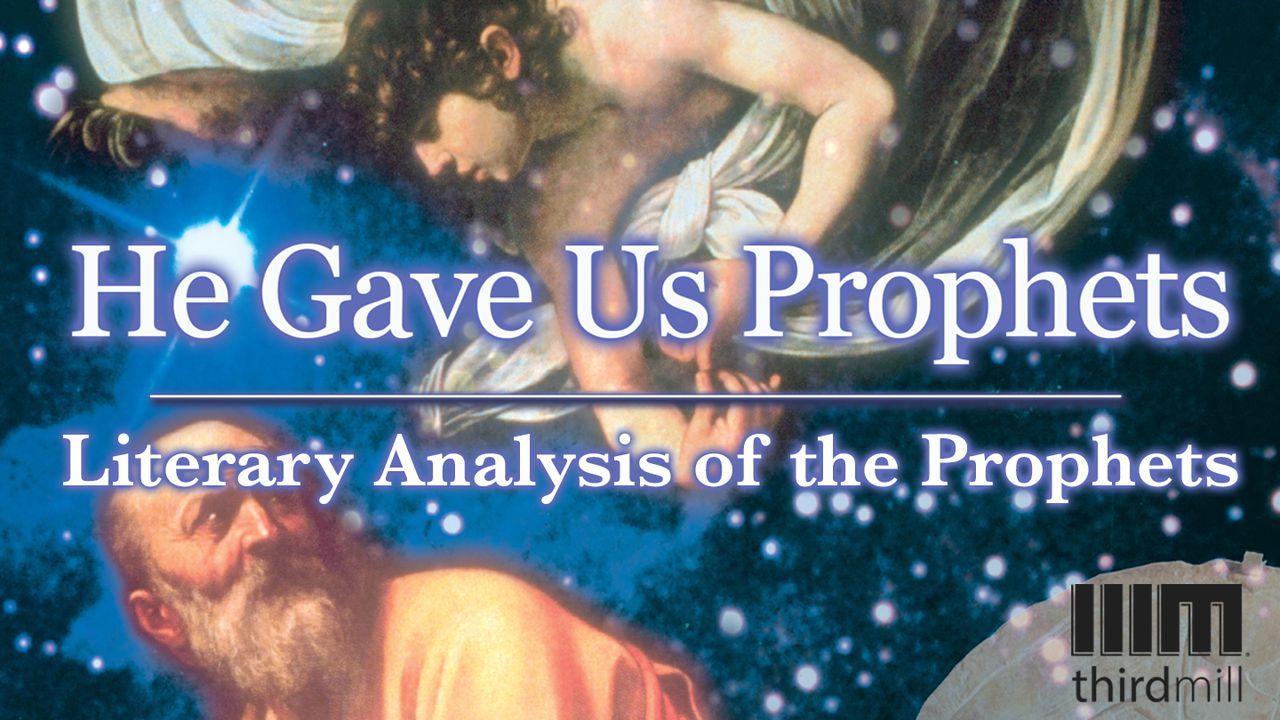He Gave Us Prophets: Literary Analysis Of The ProphetsSample

What are Prophetic Narratives? Daniel 1-2
Everyone likes a good story. That’s why we read books and go to the movies. It’s because stories do more than inform us. They also awaken our imaginations and change us in ways that are unimaginable at times. Well, when we think about the Bible, we know there are many stories or narratives in the Bible, but usually we allocate the narratives to books like Genesis and Exodus and Numbers. But we must also see that there are many narratives even in the prophetic books of the Old Testament.
Historical narratives absolutely dominate the terrain of several Old Testament prophetic books. At the top of the list is Jonah. From the beginning to the end, it tells the story of Jonah and his ministry to the city of Nineveh. A large portion of the book of Daniel is also historical narrative. Daniel’s visions and prophecies are set within the context of historical events. Beyond this, a number of chapters in books like Jeremiah and Ezekiel also form historical accounts. And to a lesser degree, narratives also appear interspersed here and there in books like Hosea and Amos and Isaiah. As we study Old Testament prophets, we must always be on the lookout for historical narratives. They form important parts of many books.
Old Testament prophecies contain two basic types of narratives: biography and autobiography. Just as these terms normally indicate, biographies are accounts from a third person point of view, and autobiographies are told from the first person point of view.
In some cases, both biographical and autobiographical accounts appear in the very same book. For example, the first six chapters of Daniel report a number of events in Daniel’s life from a third person biographical point of view. In chapter 1, we learn of Daniel’s training in Babylon. In chapter 2, we learn of Nebuchadnezzar’s dream of a great statue and Daniel’s interpretation of that dream. Chapter 3 is the story of the famous fiery furnace, and chapter 4 reports Nebuchadnezzar’s dream of a tree and Daniel’s interpretation. And then, chapter 5 reports the well-known time when Belshazzar saw handwriting on the wall, and chapter 6 is an account of Daniel in the lion’s den. All of these chapters take the shape of biography. They form third person narratives about the Old Testament prophet Daniel.
Although the first six chapters of Daniel are biographical, chapters 7–12 take a turn toward autobiography. Short introductions begin each section, but the terrain is dominated by first-person accounts. Daniel himself reports what happens to him in his own words. Chapter 7 reports Daniel’s own account of the dream of four beasts. In chapter 8 Daniel tells about his vision of a ram and a goat. Chapter 9 contains an autobiographical account of Daniel’s prayer for the exiles to return to the land. And chapters 10–12 amount to an autobiographical record of Daniel’s vision of the future for God’s people.
Click here to watch He Gave Us Prophets: Literary Analysis of the Prophets, lesson six in the series He Gave Us Prophets. thirdmill.org
Scripture
About this Plan

This reading plan examines three different kinds of literature within Old Testament prophecy: historical narratives, communication with God and communication with people.
More
We would like to thank Third Millennium Ministries for providing this plan. For more information, please visit:
http://thirdmill.org
Related Plans

Living Hope in a Suffering World: A Guided Reading of 1 Peter

Living With Direction

5 Prayers for Your Son’s School Year

Living With Joy

What Does God Want Me to Do Next?

Don't Quit

Sporting Life - God in 60 Seconds

Write Your Way Closer to God

Nicaea - Renewing the Faith
